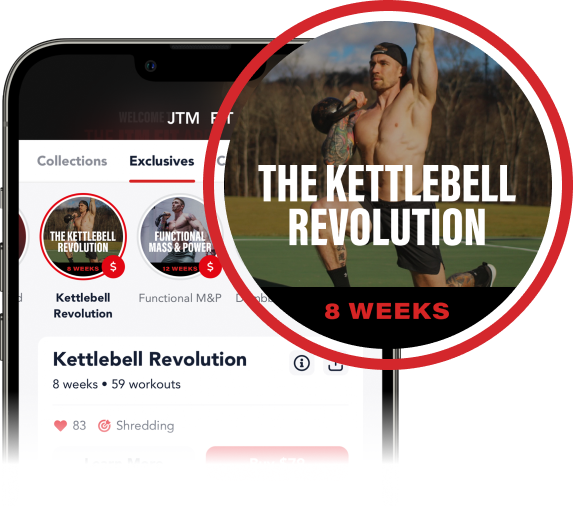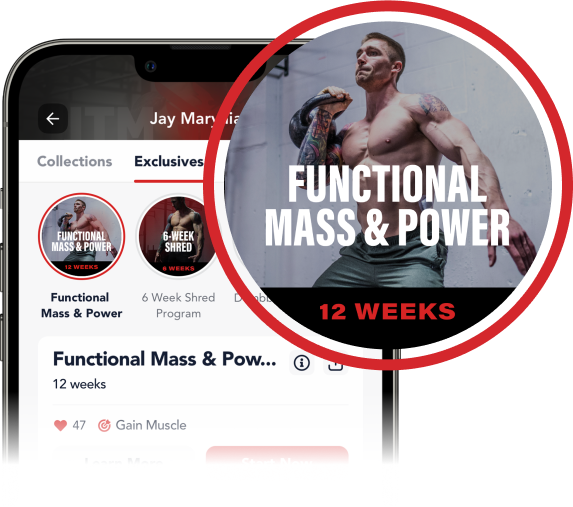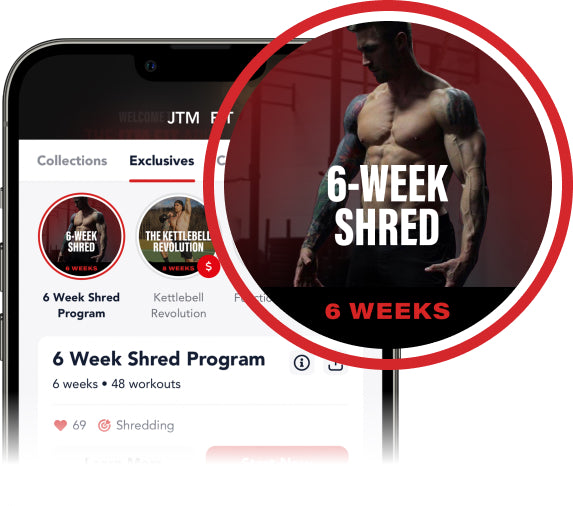Today, we're diving into one of the most effective and versatile exercises out there - the kettlebell swing. This powerful movement is a staple in functional training and a key component of the Functional PUMP program. It builds functional strength, shreds body fat, and improves overall athletic performance.
In this blog post, we'll break down the kettlebell swing, teach you how to perform it correctly, and discuss its benefits for your fitness journey. We'll also cover common mistakes and best practices to help you master this fantastic exercise.
Why the Kettlebell Swing?
The kettlebell swing is a fantastic exercise that targets multiple muscle groups at once, including the hamstrings, glutes, and the back. It's a fantastic full-body exercise that offers both strength and cardiovascular benefits. Plus, it's an essential movement for anyone looking to build a strong, functional physique without spending hours in the gym.
The Kettlebell Swing - Step by Step
Before we dive into the step-by-step instructions for the kettlebell swing, it's crucial to understand the difference between a squat movement pattern and a hip hinge. A squat involves an up-and-down pattern, whereas a hip hinge requires hinging at the waist with a slight bend in the knees. The kettlebell swing is a hip hinge movement, not a squat.
With that in mind, let's break down the kettlebell swing:
1. Setup
Start by standing with your feet slightly wider than shoulder-width apart, with the kettlebell on the ground about 10-12 inches in front of your body. Bend at the hips and knees, keeping your back straight and chest up as you reach for the kettlebell handle with both hands. Make sure to engage your lats by pulling them down and back, creating tension in your hamstrings and glutes.
2. Hike
Before swinging the kettlebell, hike it back between your legs, keeping your arms straight and shoulders down. This initial movement helps generate momentum for the swing. Practice this movement about 10 times to get comfortable with the first portion of the swing.
3. Drive
Drive your hips forward, using the power of your glutes and hamstrings to propel the kettlebell forward and upward. Your arms should remain straight throughout the movement, with the kettlebell reaching chest height at the top of the swing. Remember to bring your hips to a neutral position without overarching your back.
4. Control
As the kettlebell descends, hinge at your hips and allow the kettlebell to swing back between your legs. Keep your core engaged and your back straight throughout the movement. Ride the momentum of the descending kettlebell, hinging at the waist to prepare for the next swing.
5. Repeat
Continue swinging the kettlebell, maintaining a smooth, rhythmic motion. Focus on powering the swing with your hamstrings and glutes while keeping your arms relaxed and serving as guides for the kettlebell's trajectory.
Common Mistakes to Avoid
- Thinking the kettlebell swing is a squat movement: Remember, the kettlebell swing is a hip hinge movement, not a squat. Focus on hinging at the hips rather than bending your knees too much.
- Rounding your back: Ensure you keep a neutral spine throughout the movement to avoid putting stress on your lower back.
- Using your arms: The power of the swing should come from your hips, glutes, and hamstrings. Your arms are simply there to guide the kettlebell.
- Overarching your back at the top of the swing: Bring your hips to a neutral position without overarching your back.
Incorporating the Kettlebell Swing into Your Workouts
The kettlebell swing is an incredibly versatile exercise that can be easily incorporated into various workout routines. Here are some ways to include the kettlebell swing in your training:
1. Warm-up or Finisher
The kettlebell swing is an excellent exercise to use as part of your warm-up or as a finisher to wrap up your workout. As a warm-up, perform 2-3 sets of 15-20 swings to activate your posterior chain and increase your heart rate. As a finisher, try a high-intensity interval training (HIIT) approach by performing 20-30 seconds of kettlebell swings followed by a short rest period, repeating for several rounds.
2. Superset with Other Exercises
Superset kettlebell swings with other functional training exercises to create a challenging, full-body workout. For example, perform a set of kettlebell swings followed immediately by a set of push-ups, pull-ups, or lunges. Repeat for the desired number of sets.
3. Circuit Training
Incorporate kettlebell swings into a circuit training routine with other functional exercises. Set up stations for exercises like kettlebell swings, box jumps, burpees, and plank variations, and perform each exercise for a set amount of time or reps before moving on to the next station. Complete the circuit multiple times for a challenging and effective workout.
4. Interval Training
Use kettlebell swings as part of an interval training workout. Perform kettlebell swings at a high intensity for a set period (e.g., 30 seconds), followed by a short rest period (e.g., 15 seconds). Repeat this pattern for a set number of rounds, and consider alternating between kettlebell swings and other exercises to keep your workout fresh and challenging.
Benefits of Functional Training with Kettlebell Swings
Functional training, such as the kettlebell swing, has numerous benefits that can enhance your overall fitness and daily life. These benefits include:
- Improved functional strength: Kettlebell swings target multiple muscle groups simultaneously, building functional strength that can be applied to real-life movements and activities.
- Increased cardiovascular endurance: The dynamic nature of the kettlebell swing challenges your cardiovascular system, improving your overall endurance and heart health.
- Enhanced mobility and flexibility: The kettlebell swing's hip hinge movement pattern can help improve mobility and flexibility in your hips and lower back.
- Better core stability: The kettlebell swing requires a strong and stable core to maintain proper form and control the movement, which can lead to improved overall core strength.
- Efficient, full-body workout: Kettlebell swings are a time-efficient way to train multiple muscle groups at once, making them an ideal exercise for those with busy schedules.
Kettlebell swings are an excellent addition to any functional training routine, providing a range of benefits, including improved functional strength, increased cardiovascular endurance, enhanced mobility and flexibility, better core stability, and efficient full-body workouts.
By mastering the correct form and incorporating kettlebell swings into your workouts, you can truly unlock your fitness potential.
And if you're looking for even more guidance, tips, and workouts, I encourage you to download my app!
It's packed with a variety of functional training exercises, including kettlebell swings, along with comprehensive workout programs designed to help you reach your fitness goals.
The app also includes features like progress tracking, personalized coaching, and a supportive community to keep you motivated and accountable.
So, don't wait any longer.
Download my app now and start your journey towards a stronger, more functional, and healthier version of yourself! Together, we'll conquer your fitness goals, one kettlebell swing at a time.









